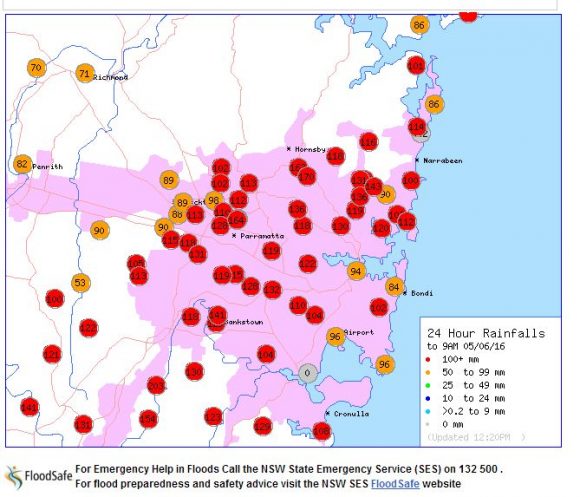
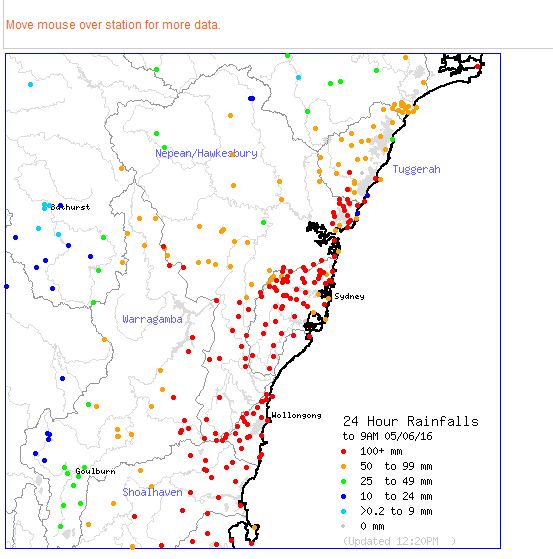
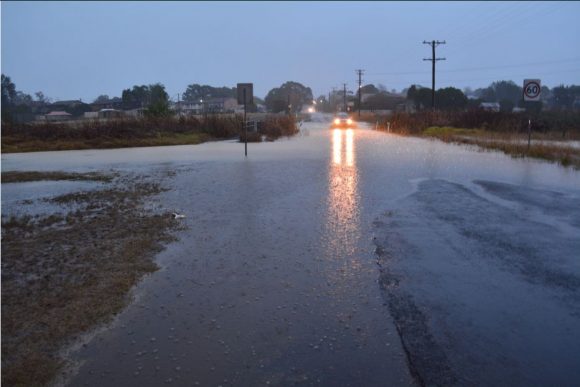
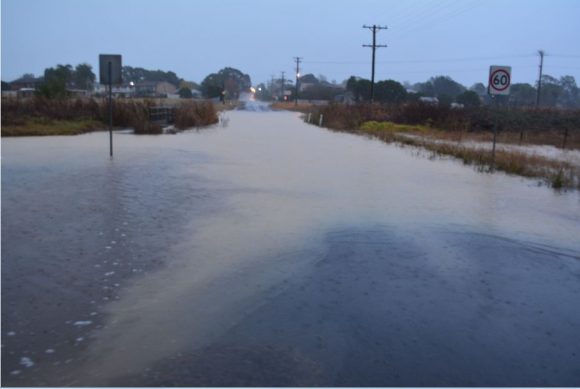
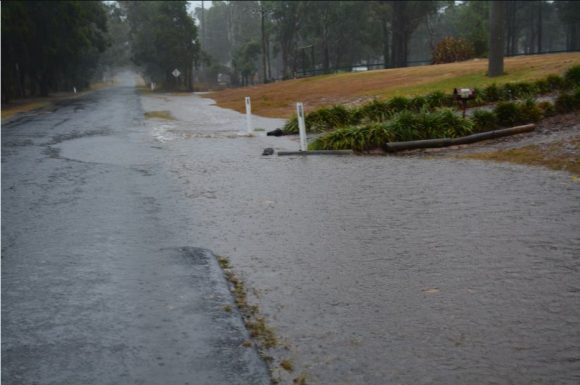
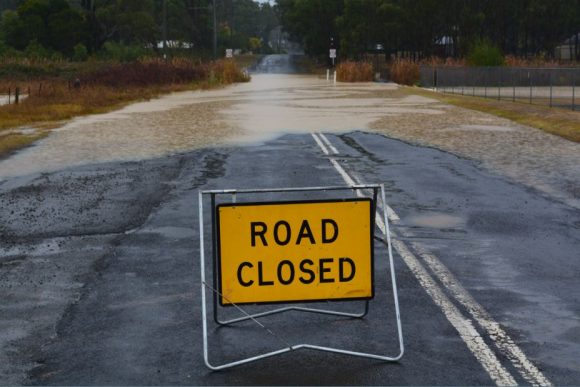
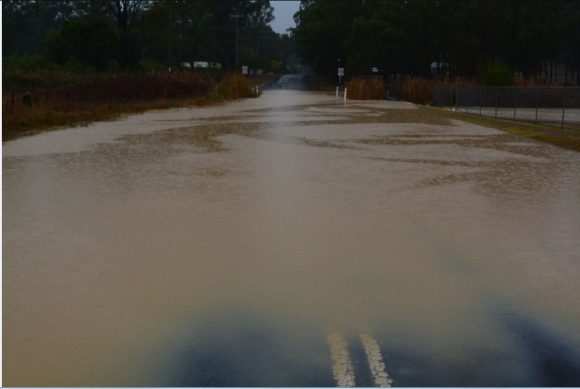
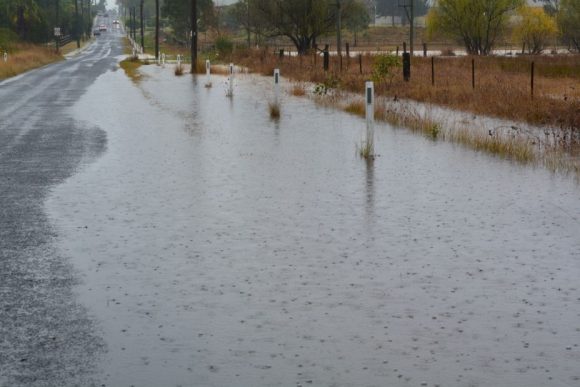
The eastern seaboard of New South Wales has been swamped with heavy rain and a number of streams and rivers have flooded. This event is exceptional because of its widespread nature and size of the rain band and the impact that it is having along the coast.
Trees have been brought down, flooding is occurring around Sydney and elsewhere including Coffs Harbour, Lismore and Tweed Heads.
Rainfall totals have topped a staggering 468 mm at Wooli River followed by 398 mm at Bennetts Road (Coffs Harbour) to 9 am 5/6/2016. Other significant rainfall totals include:-
Bellingen 365 mm.
Carinda River 345 mm.
Gundagai Street (Coffs Harbour) 341 mm.
Tweed Heads 330 mm.
Robertson (Illawarra) 285 mm.
Burringbar 262 mm.
Mount Darrough (South Coast NSW) 162 mm.
For the 24 hours to 9 am 5/6/2016, a large area of Sydney received in excess or more than 100 mm of rain and coupled with strong winds, numerous issues, road closures and power outages have occurred.
At daybreak and again at 11 am, I had the the opportunity to locate flooded roads around Pitt Town in outer north west Sydney and soon found flooding across Old Pitt Town Road and other low lying areas. Numerous photos were taken of the flooding within the district. This shows that the event has affected all of Sydney in one way or another.
This system is moving south and a clearing trend is taking place but ahead of that, further heavy rain has occurred. In Sydney to 3 pm 115 mm has fallen at Ingleburn, followed by 106 mm at Parramatta and 101 mm at Turramurra.
At Blacktown where I reside, 89 mm fell to 9 am Sunday followed by another 60 mm to 3 pm (Combined total of 149 mm). At Parramatta 164 mm fell to 9 am Sunday (Combined total of 270 mm). It is these figures that makes the event significant.
The system will slowly move south over coming hours taking the heavy rain with it allowing for a clean up to commence.

The attached rainfall plot for Sydney for the 24 hour period to 9 am 6/6/2016 shows what occurred during Sunday. Rainfall eased significantly after sunset but many areas including Blacktown where I live received more than 100 mm of rain. Most of the rain for Sydney fell between 9 am to 9 pm.
Cumulative rainfall for Blacktown where I live tops 198 mm for the 2 days but this is not that significant when compared to other centres.
When travelling to work this morning areas around Wentworthville and Westmead were blacked out and traffic lights out of action.
This appears to have been the largest east coast low for a number decades and it is rare for the entire east coast of New South Wales to be affected by the one system. Normally east coast lows impact a specified section of the coast but this one was different. As such the impacts are extensive from flooding, river flooding, coastal erosion, tree damage, power outages and building damage.
On the way home from work early due to an electrical fire where I work that has impacted our network, I noticed repair crews removing fallen trees at Wentworthville and repairing fallen power lines.
What makes this east coast low unusual was that rainfall totals of 200 mm or more have been recorded at centres right along the east coast from Tweed Heads all the way to the New South Wales / Victorian state border.
Big rainfall totals for the 24 hours include:-
Robertson 365 mm.
Clover Hill 292 mm.
Moruya Plumwood 259 mm.
Mount Darragh 258 mm.
Moruya (The Lagoon) 250 mm.
Bendethera 232 mm.
Dombarton Loop 208 mm.
Wattamolla 203 mm.
This system also impacted parts of Tasmania with 200 mm plus falls falling at Iris River (230 mm), Lake Mac Kenzie (237 mm) and Fisher River (279 mm).
This system also impacted Canberra where falls of 50 to 70 mm occurred and two locations in far eastern Victoria (Far east) received just over 100 mm for the same period.
The storm system impacted 4 states plus the ACT and will certainly be regarded as a most unusual east coast low due to its widespread impact that it has had, the number of people affected and of course its scale.